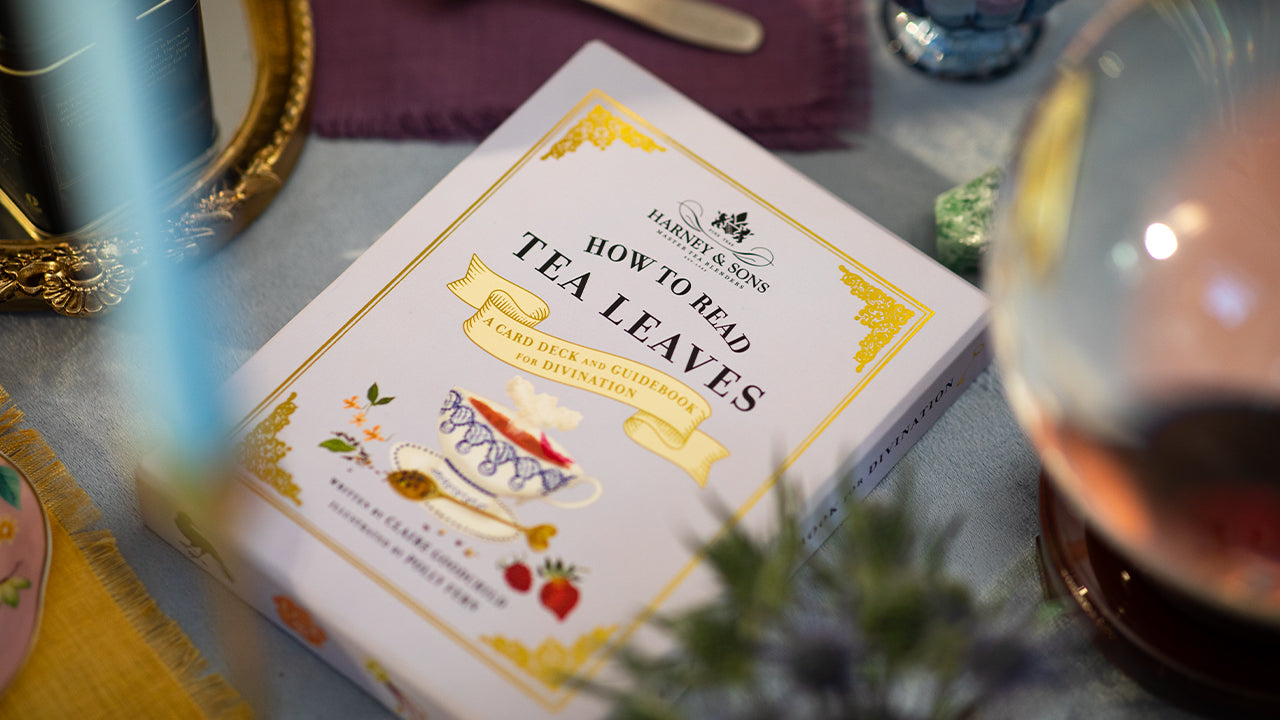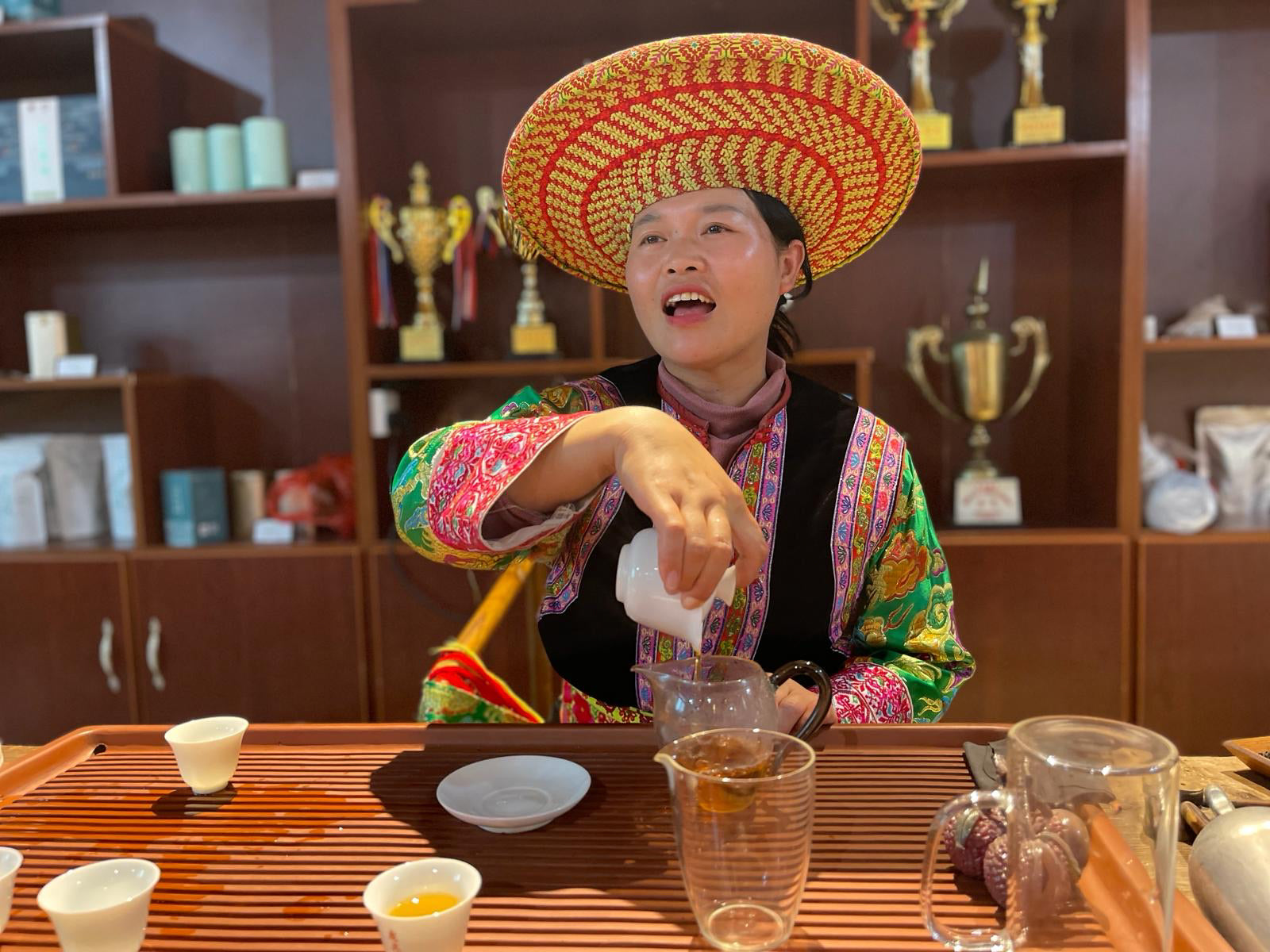Are you a cinnamon tea fan? We know there are lots of you out there who can’t get enough cinnamon in your life, especially our perennial number-one best-selling blend, Hot Cinnamon Spice. If you’d like to know more about this amazing spice, or if you’re not on the cinnamon wagon but are “cinnacurious,” we’ve put together a bundle of cinnamon info for you that includes the history of cinnamon, cinnamon tea benefits, customer reviews (so you see what all the fuss is about), and a cinnamon tea latte recipe. Ready to get spicy? Here we go!

Where Does Cinnamon Come From?
Cinnamon is made from the inner bark of several tree species from the genus Cinnamomum. It’s the name for several species of trees and the commercial spice products that are produced. Much like all teas (except tisanes and herbals) come from the Camellia sinensis family of plants, all cinnamon trees are members of the genus Cinnamomum in the family Lauraceae, or the laurel family. The trees can grow to 60 or more feet, but are often trimmed and kept as bushes in order to make cultivating the bark easier.
Once harvested, the bark is dried and either ground or rolled into sticks or “quills.” Cinnamon has been in use since 2000 BC and is one of the first known spices. Ceylon cinnamon, also known as “true” cinnamon, is native to Sri Lanka (formerly Ceylon). Today, cinnamon is primarily grown in other Asian countries including China, Indonesia, and Vietnam.

Cinnamon’s Culinary Purposes & Attributes
While there are several species of cinnamon, there are four main types used for culinary purposes: Ceylon cinnamon (also called Sri Lankan or “true” cinnamon), Chinese cinnamon (or Cassia cinnamon), Indonesian cinnamon (or Korintje cinnamon), and Vietnamese cinnamon (or Saigon cinnamon). Ceylon cinnamon has a subtle, delicate flavor, while the other cinnamons have spicier, bolder flavors. They also range in color, with Ceylon cinnamon being a yellowish brown, Indonesian and Vietnamese more of a reddish brown, and Chinese cinnamon a darker brown.
The History of Cinnamon
Cinnamon was considered to be as valuable as gold in ancient times and was used as a gift for deities and monarchs. Ancient Egyptians used cinnamon as part of their embalming rituals, and both Egyptians and Romans burned it at funerals. One of the first traded spices, cinnamon was sought in 15th century European explorations, and it has been said that it indirectly led to the discovery of America. Between the 16th and 18th centuries, the Portuguese and Dutch fought to control the cinnamon plantations of Ceylon.

Cinnamon Tea Health Benefits
Cinnamon, and thus cinnamon tea, has many health benefits. In addition to being considered an appetite stimulant, good for digestion, a treatment for coughs and sore throats, and thought to even be an aphrodisiac, cinnamon has antioxidant and anti-inflammatory properties along with Vitamin A, calcium, and magnesium. Research has indicated it can help lower blood sugar and cholesterol in people with diabetes, as well as raise metabolism. So not only is it delicious, it’s healthy (in moderation, of course!).

Harney & Sons Cinnamon Teas
As mentioned previously, our Hot Cinnamon Spice is our best-selling tea year after year. The original recipe was shared with our founder and my grandfather, John Harney, in the early 1980s; today’s version contains three types of cinnamon. It’s important to note that even though it tastes sweet, it has zero sugar so it’s a great alternative for those individuals with diabetes or looking to lower their sugar intake.
It comes in many varieties, as you’ll see in our Cinnamon Tea Blends Collection. Those varieties include a Green Hot Cinnamon Spice, Decaf Hot Cinnamon Spice, an Herbal Hot Cinnamon Spice, and a Hot Cinnamon Spice Nitrogen Tea that creates a textured sipping experience. We also have Apple Cinnamon tea, Pumpkin Spice, and Hot Apple Spice teas with strong cinnamon notes, a variety of Chai teas full of cinnamon and other warming spices, and Hot Cinnamon Spice CBD gummies from our sister company, The Hemp Division.
Here are just a few of the thousands of comments we’ve received from customers about our Hot Cinnamon Spice:
“This is the best tea ever in the history of the world! I know that is saying a lot but that is how much I love it!”
“This is my favorite loose leaf tea! I have branched out from black Hot Cinnamon to the Green Hot Cinnamon and also the Decaf Hot Cinnamon (for guests who don’t do caffeine). All forms of Hot Cinnamon are great!”
“I start every day by drinking a cup of Harney Hot Cinnamon Spice Tea with a splash of unsweetened almond milk. The tea is deliciously spicy and naturally sweet. It has just enough caffeine to wake me up and get me going without giving me caffeine jitters.”
“My day isn't complete without some Hot Cinnamon Spice tea. I love how sweet and spicy it is without adding any sweeteners. Delicious tea!”
“I have been drinking this tea for years and absolutely love.I have sent it to so many friends and now they are devotees of this flavor.”
Whether you enjoy it hot or cold, as a black tea, a green tea, herbal, or decaf, we hope you’ve enjoyed learning more about cinnamon, Hot Cinnamon Spice, and are ready to brew a cup right now! In case you’d like to try it as a latte, here’s a simple recipe we think you’ll enjoy. Cheers!
Ingredients
- ½ C water
- 2 tsp loose-leaf or 2 sachets or tea bags of Harney Hot Cinnamon Spice Tea
- ½ C milk of your choice or milk alternative
- Sweetener, if desired
Instructions
- Heat water to boiling (212°F). Pour the water over the tea in a small mug or container and let steep for 4-5 minutes.
- While the tea is steeping, heat the milk for about 60 seconds in the microwave.
- If using tea leaves, strain the tea into the milk, or if using sachets or tea bags, remove them and pour the tea into the milk. Add sweetener to your taste if desired.
- Dust the top with cinnamon. If feeling decadent, first top with whipped cream and then dust with cinnamon. Enjoy!















